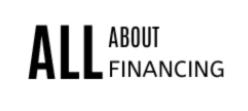The Ultimate Guide to Saving Money: Best Strategies to Build Your Wealth

The Importance of Saving Money
Saving money is a fundamental pillar of financial well-being that plays a crucial role in ensuring a secure and stable future. One of the primary reasons for saving is to achieve financial security, allowing individuals and families to navigate through life’s uncertainties without the burden of financial stress. By setting aside a portion of income, people can create a safety net that provides peace of mind in the face of unexpected expenses, such as medical emergencies or job loss.
Moreover, preparation for unforeseen circumstances cannot be overstated. Having a solid savings plan enables individuals to handle emergencies effectively, without resorting to high-interest debt sources. This practice is one of the best ways to save money, ensuring that one remains resilient against financial pitfalls that may arise unexpectedly.
Beyond the realm of security, saving money empowers individuals to seize future opportunities. Funds accumulated through diligent saving allow for investments in education, property, or starting a business— endeavors that can lead to increased wealth and improved quality of life over time. Additionally, the habit of saving fosters a sense of control over personal finances, reducing anxiety related to economic instability.
On a psychological level, saving money contributes significantly to emotional well-being. The act of watching savings grow instills a sense of accomplishment and can enhance one’s overall outlook on life. As individuals progress toward their financial goals, the ability to make choices regarding lifestyle and investments increases, allowing for a more fulfilling existence.
In essence, the importance of saving money extends beyond mere financial benefits; it encompasses emotional resilience and opens doors to future opportunities. Engaging in effective saving strategies, such as budgeting and setting specific financial goals, is undoubtedly among the best ways to save money and build wealth for a brighter tomorrow.
Creating a Budget: Your Roadmap to Financial Success
Establishing a budget is an essential first step in managing personal finances and represents one of the best ways to save money. A well-structured budget acts as a roadmap, helping individuals to navigate their financial landscape effectively. To create a realistic budget, begin by calculating your total monthly income, including salaries, freelance work, and any other sources of revenue. Next, it is crucial to itemize fixed and variable expenses.
Fixed expenses include rent or mortgage payments, insurance, and loan repayments, while variable expenses may involve groceries, entertainment, and dining out. Carefully monitoring these expenditures leads to a clearer understanding of one’s financial habits, allowing for the identification of areas where spending can be curtailed. Various apps and tools, such as Mint or YNAB (You Need A Budget), can assist in tracking these financial movements, streamlining the budgeting process.
One popular budgeting method is the 50/30/20 rule. Under this strategy, individuals allocate 50% of their income to necessities, such as housing and food; 30% to discretionary spending, including hobbies and leisure; and 20% toward savings and debt repayment. Alternatively, zero-based budgeting requires every dollar of income to be assigned a specific purpose, leading to meticulous planning and heightened accountability.
By implementing a budgeting strategy, individuals can create a clear path toward achieving their financial goals. This process not only illuminates the best ways to save money but also fosters a more disciplined approach to spending. With a defined budget, one can make informed choices, reduce unnecessary expenditures, and ultimately, work towards financial freedom.
Smart Shopping: Tips to Reduce Expenses
Smart shopping is an essential component of the best ways to save money. By adopting strategic purchasing habits, individuals can significantly reduce their expenses while still acquiring the goods and services they need. One effective approach is comparing prices across multiple retailers, both online and in-store. Utilizing price comparison websites or apps can help shoppers identify the best deals available, ensuring they do not pay more than necessary. Furthermore, it is advisable to keep an eye on sales and clearance events, as these occasions often present substantial discounts on items that are regularly priced.
In addition to utilizing sales, the strategic use of coupons can greatly enhance one’s ability to save. Many retailers offer digital coupons that can be easily accessed through their websites or apps. Regularly subscribing to newsletters from your favorite retailers can also provide exclusive deals and discounts. To maximize savings, it is beneficial to combine coupons with sales whenever possible. This practice not only reduces overall spending but also allows consumers to stretch their budgets further.
Timing can play a critical role in saving money on certain items. For example, purchasing seasonal items after their peak demand can yield substantial savings. Similarly, understanding the best time to buy specific products, such as electronics or clothing, can make a significant difference in overall expenditures. Awareness of these cycles is crucial for a savvy shopper seeking the best ways to save money.
Lastly, being mindful of psychological triggers that lead to overspending, such as flash sales or fear of missing out, can help shoppers make more informed decisions. It is vital to remain focused on personal financial goals and resist impulsive purchases. By remaining disciplined and strategically planning shopping excursions, individuals can effectively reduce expenses and cultivate a habit of smart shopping.
Automating Your Savings: Make it Effortless
One of the most effective strategies to achieve financial stability is to automate your savings. By doing so, you ensure that money is consistently set aside without deliberate effort, allowing you to prioritize your savings goals. Automation can take the form of direct deposits from your paycheck into designated savings accounts, which simplifies the savings process and minimizes the temptation to spend your earnings. This practice not only streamlines your finances but also reinforces the discipline necessary for building wealth.
To maximize your savings potential, consider establishing various accounts tailored to specific goals. For instance, creating a separate account for an emergency fund helps you prepare for unforeseen expenses without dipping into your primary savings. Similarly, designating an account for vacations or major purchases enables you to budget more effectively while ensuring your goals remain attainable. This targeted approach allows you to track progress and maintain motivation, facilitating your journey toward achieving financial wellness.
Online banking options have made automating savings even more accessible. Many banks allow customers to set up automatic transfers between their checking and savings accounts on a schedule that suits their cash flow. This flexibility empowers individuals to choose how much and how often they want to save. Moreover, some banks offer high-yield savings accounts, which can help your money grow faster while still being readily accessible when needed. Choosing banks with minimal fees and favorable interest rates can further enhance your ability to save effectively. Implementing these best ways to save money can significantly impact your overall financial situation, helping you achieve your desired financial outcomes.
Cutting Unnecessary Subscriptions and Expenses
In today’s world, it is all too easy to accumulate subscriptions and expenses that may no longer serve our needs or fit our budgets. Identifying and eliminating these unnecessary financial burdens represents one of the best ways to save money. Recognizing the subscriptions we utilize can help prioritize essential services and interests while identifying those we can live without.
The first step is to conduct a thorough review of your bank statements and bills over several months to pinpoint all recurring charges. Make a comprehensive list of subscriptions, including streaming services, magazine subscriptions, or any other monthly payments. Once you have this compiled, categorize them into three groups: essential, occasional, and non-essential. Determine which services are truly valuable and which subscriptions are contributing little to your quality of life.
After organizing your subscriptions, consider evaluating the frequency of usage and the necessity of each service. Ask yourself if you are using a specific service to its full potential. For instance, if you are not frequently using a gym membership, it may be time to consider canceling it or switching to a more affordable alternative, such as community fitness classes or outdoor activities.
Additionally, explore cheaper or even free substitutes for necessary services. Many online platforms and community resources offer similar benefits without the financial commitment. For example, instead of paying for premium music streaming platforms, take advantage of ad-supported versions or local music events. Reducing unnecessary expenses gradually contributes to a larger financial goal and allows for greater flexibility in your budget.
By carefully analyzing subscriptions and prioritizing your spending, you can uncover significant savings, representing some of the best strategies to build your wealth going forward. Taking control in this way empowers you to allocate funds toward more meaningful experiences and savings goals.
Using Cash: The Envelope System and Other Techniques
In the pursuit of financial savings, the utilization of cash-based budgeting methods has proven to be a highly effective strategy. One popular approach is the Envelope System, which entails dividing cash into different envelopes designated for specific spending categories such as groceries, entertainment, or transportation. By allocating a fixed amount of cash to each category at the beginning of a budgeting period, individuals can restrict their spending based on predefined limits. This not only fosters discipline but also provides a tangible way to visualize money management.
Implementing the Envelope System begins with assessing monthly expenses and determining the appropriate categories for budgeting. The next step involves withdrawing the total budgeted amount in cash and dividing it into the respective envelopes. As the month progresses, individuals are encouraged to only spend the cash allocated to each envelope, ensuring they do not exceed their budget. Once the cash is depleted in any given envelope, spending in that area must stop until the next budgeting cycle begins.
The benefits of using cash, as opposed to credit or debit cards, include a heightened awareness of spending habits and the avoidance of overspending. Many consumers find that handling physical cash creates a more meaningful experience, making it easier to comprehend the value of money and encouraging prudent financial decisions. In a digital world where electronic transactions dominate, practitioners of cash budgeting can still adapt by using mobile apps designed to mimic the Envelope System, promoting easy tracking of spending while adhering to a cash-based principle.
While managing cash can be challenging in an increasingly cashless society, incorporating techniques such as the Envelope System can effectively contribute to one’s goal of finding the best ways to save money. By understanding the mechanics of cash budgeting, individuals can build meaningful habits that lead to significant financial benefits.
Setting Savings Goals: Short-term vs Long-term
Establishing clear savings goals is an essential step in the journey toward financial stability and wealth building. Defining these goals not only provides direction but also creates a tangible target to strive for, enhancing one’s commitment to saving. The best ways to save money often hinge on distinguishing between short-term and long-term objectives.
Short-term savings goals typically refer to needs that will arise within one to three years. These could include saving for a vacation, purchasing a new appliance, or building an emergency fund. It is advisable to create specific monthly or bi-monthly saving benchmarks that facilitate reaching these goals. For instance, if one aims to save $3,000 for a vacation in one year, setting aside $250 monthly can make this goal more manageable. Tracking progress against these defined objectives keeps individuals motivated, as they can visibly see how their efforts are translating into savings.
Conversely, long-term savings goals stretch beyond three years and may involve larger financial goals like retirement, buying a home, or funding education. These objectives require not only inspiration but also a comprehensive strategy and understanding of compound interest. Allocating a specific percentage of income, such as 15%, into long-term savings accounts each month can yield significant benefits over time. Additionally, revisiting these goals periodically is crucial since both personal circumstances and economic conditions can shift. Adjusting goals will help maintain their relevance and optimize saving strategies.
In essence, monitoring progress towards savings goals is vital to staying on track. Utilizing budgeting tools and financial apps can aid in this tracking while also providing insights into spending patterns. By setting attainable short-term goals coupled with ambitious long-term plans, individuals can effectively utilize the best ways to save money while enjoying the journey toward wealth building.
Investing for the Future: Growing Your Savings
Transitioning from saving to investing represents a significant step toward building substantial wealth over time. While saving money in a traditional savings account provides liquidity and security, the best ways to save money ultimately involve placing those savings in avenues with the potential for greater returns. Investing is a fundamental component of wealth accumulation and can take many forms, each offering different levels of risk and return.
One prevalent investment option is stocks, which represent ownership in a company. Historically, stocks have delivered higher returns than most other asset classes, particularly over long investment horizons. However, they also come with higher volatility, meaning the value can fluctuate significantly. It is essential for investors to assess their risk tolerance when considering stocks as part of their financial strategy.
Bonds are another investment vehicle, typically viewed as safer than stocks. Bonds are essentially loans to companies or government entities that pay a fixed interest rate. While the returns from bonds are generally lower than those from stocks, they provide a stable source of income and help balance a portfolio’s risk.
Mutual funds and exchange-traded funds (ETFs) offer a diversified investment approach, allowing investors to pool money with others to buy a broader range of stocks and bonds. This diversification can minimize risk, making it easier to navigate market fluctuations.
Retirement accounts like 401(k)s and IRAs are specifically designed to help individuals save for retirement, offering tax advantages that can enhance overall savings. Contributing to these accounts can be one of the best ways to save money long-term, particularly when employers offer matching contributions.
Effectively growing your savings involves understanding these various investment options, assessing risks, and establishing a diversified portfolio tailored to individual financial goals. By embracing a well-rounded investment strategy, individuals can maximize their potential for financial growth and create a stable foundation for their future wealth.
Conclusion
In the journey towards financial stability, establishing saving money as a habitual practice is paramount. Throughout this guide, we have explored various strategies that highlight the best ways to save money, from creating a comprehensive budget to maximizing savings with high-yield accounts. Each method discussed provides unique benefits that can be tailored to fit personal financial situations.
One of the most crucial aspects of saving is consistency. Automating savings through direct deposits can significantly minimize the temptation to spend unnecessarily, thereby reinforcing a habit of saving over time. Likewise, setting explicit financial goals allows individuals to stay focused and motivated, creating a clear path for their savings endeavors. Such tactics not only help in growing wealth but also foster a more mindful approach to personal finance.
Additionally, it is essential to cultivate an awareness around spending habits. Regularly reviewing expenditures and identifying areas to cut costs is one of the best ways to save money efficiently. By being proactive in managing finances, individuals can shift their focus from short-term pleasures to long-term financial security. Conversely, celebrating financial milestones can instill positive reinforcement for continued saving efforts.
Lastly, remember that adapting these strategies to fit one’s lifestyle is vital. What works for one individual may not be suitable for another, emphasizing the importance of a personalized finance plan. As readers consider these methods, we encourage them to embrace flexibility and perseverance in their saving journey. Making saving a routine part of life will ultimately lead to greater financial independence and peace of mind in the long run.






